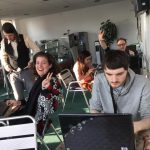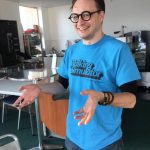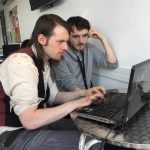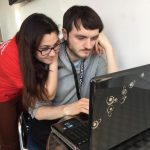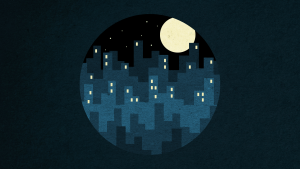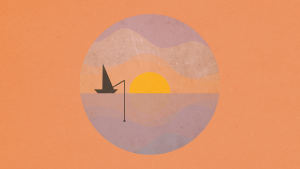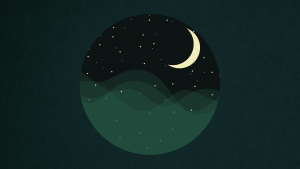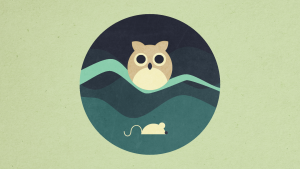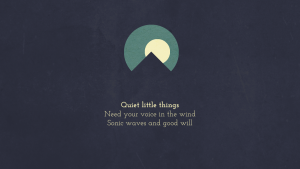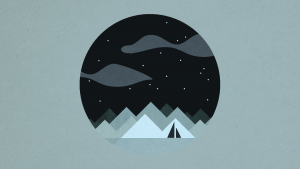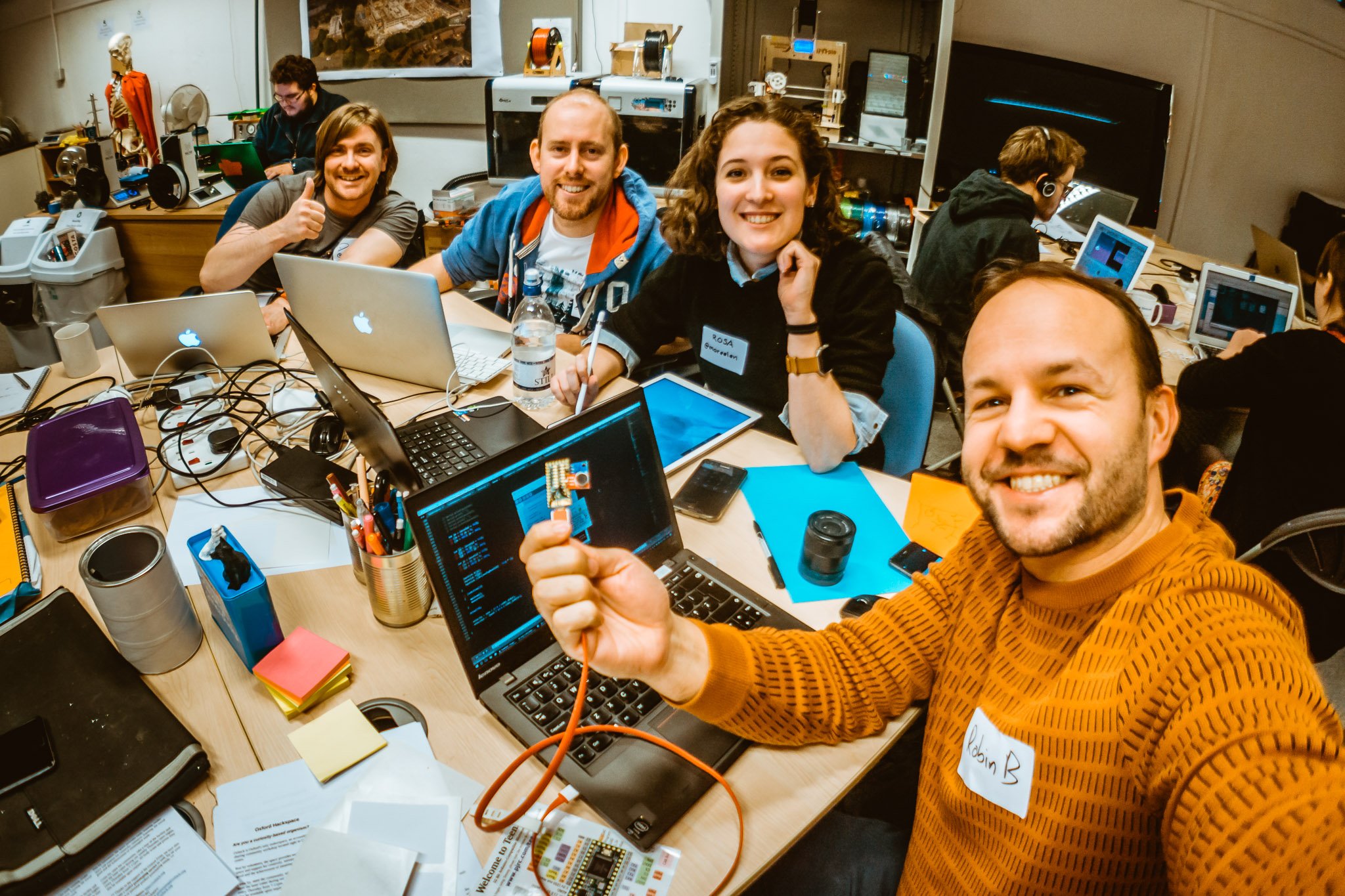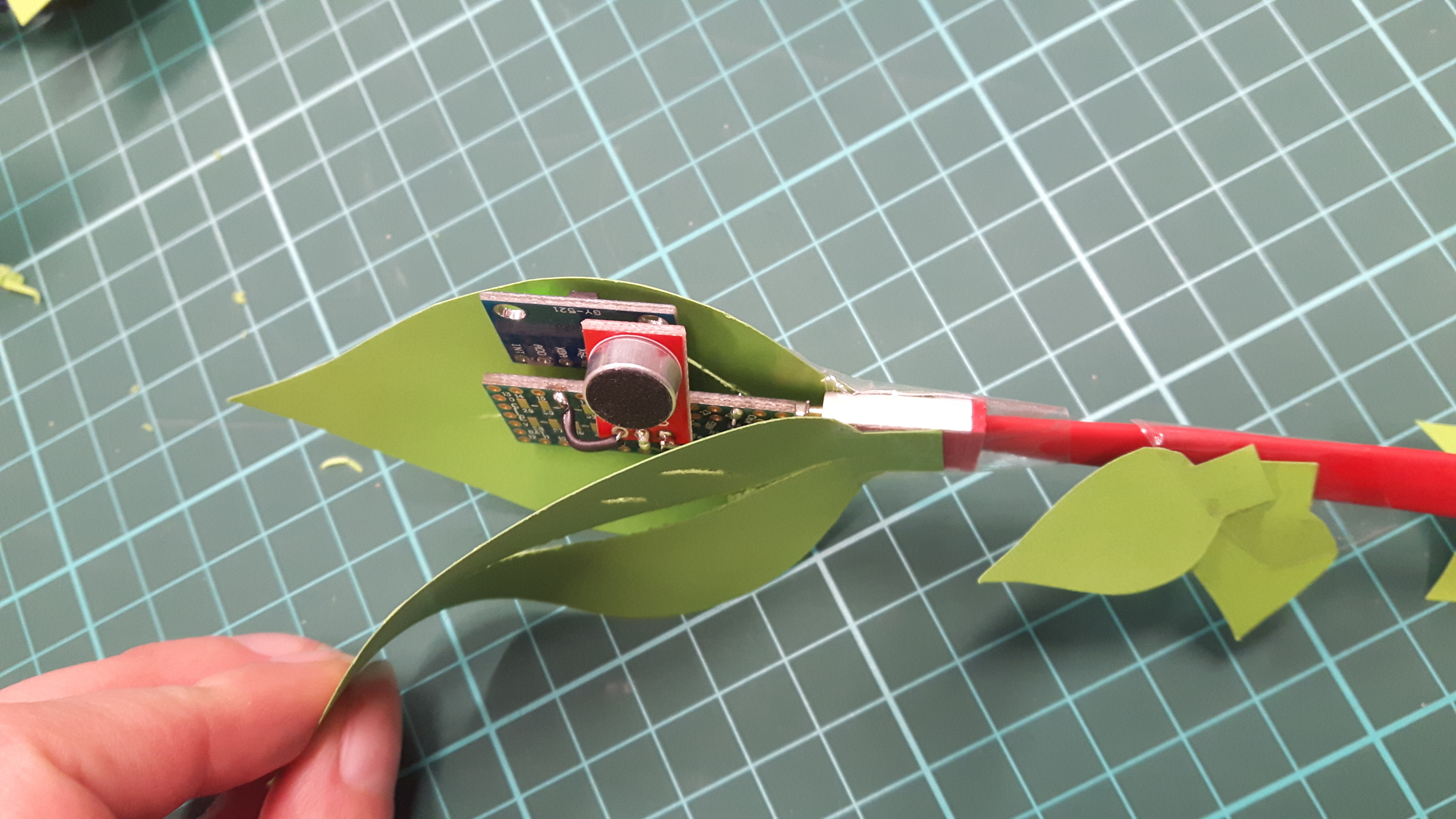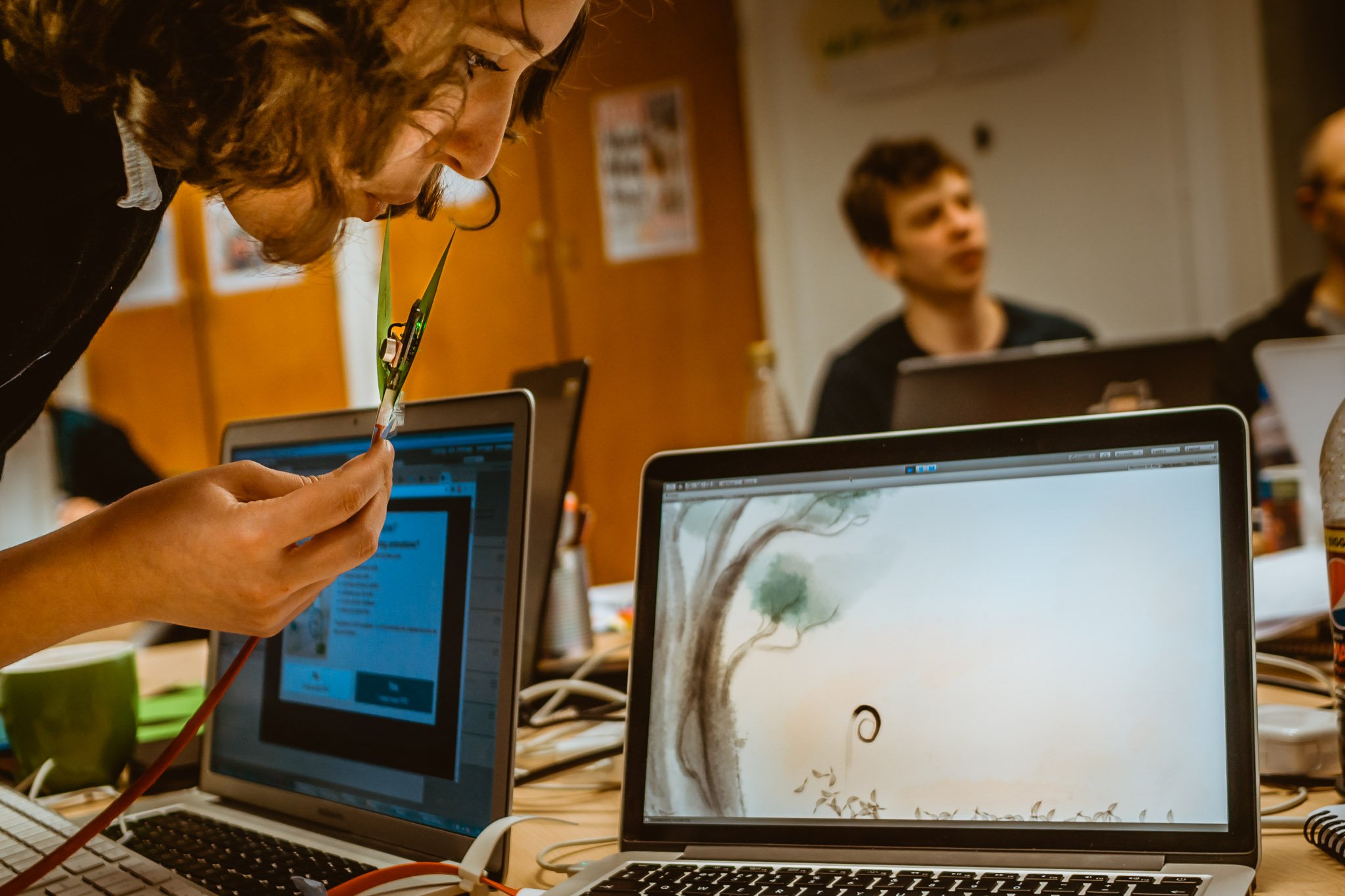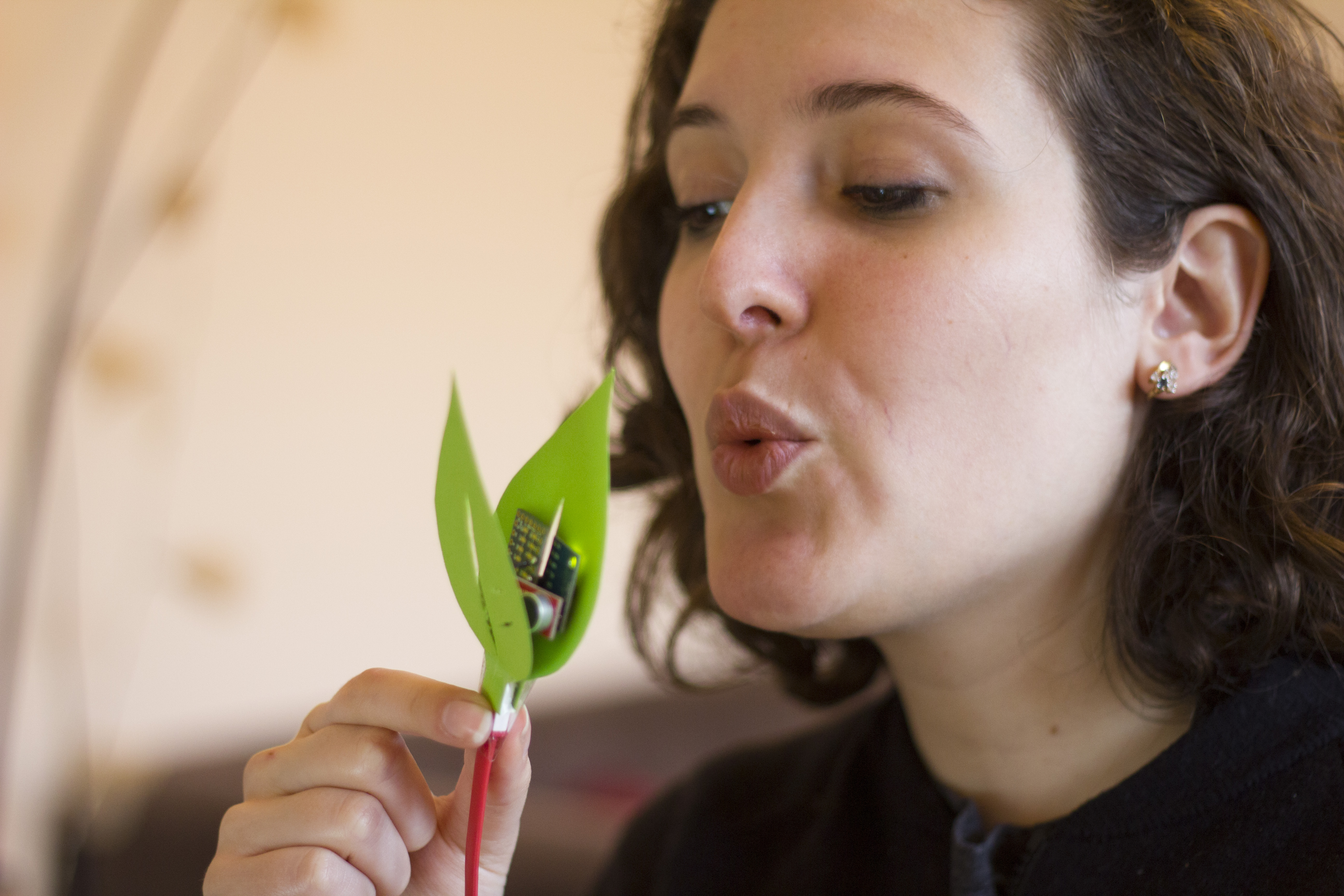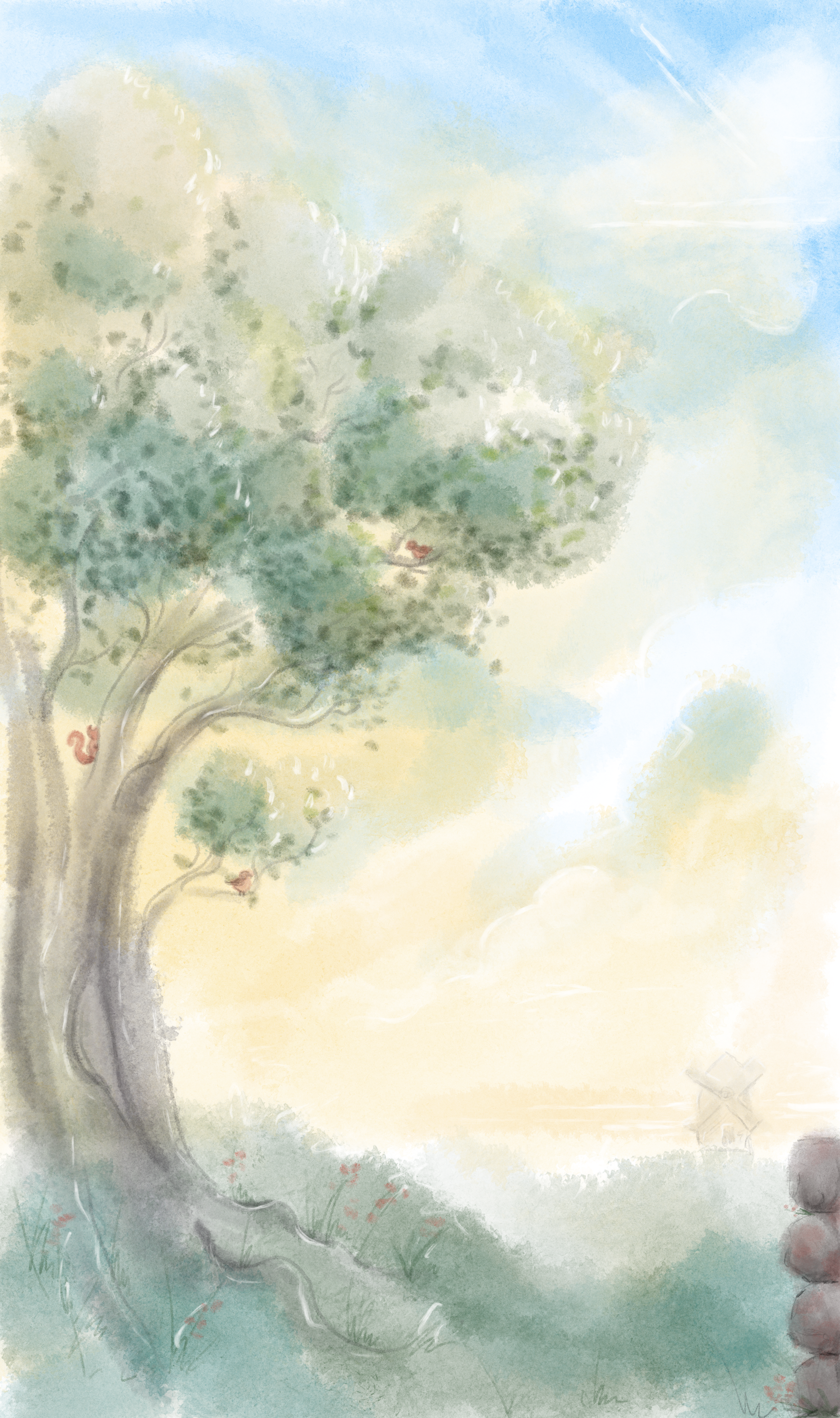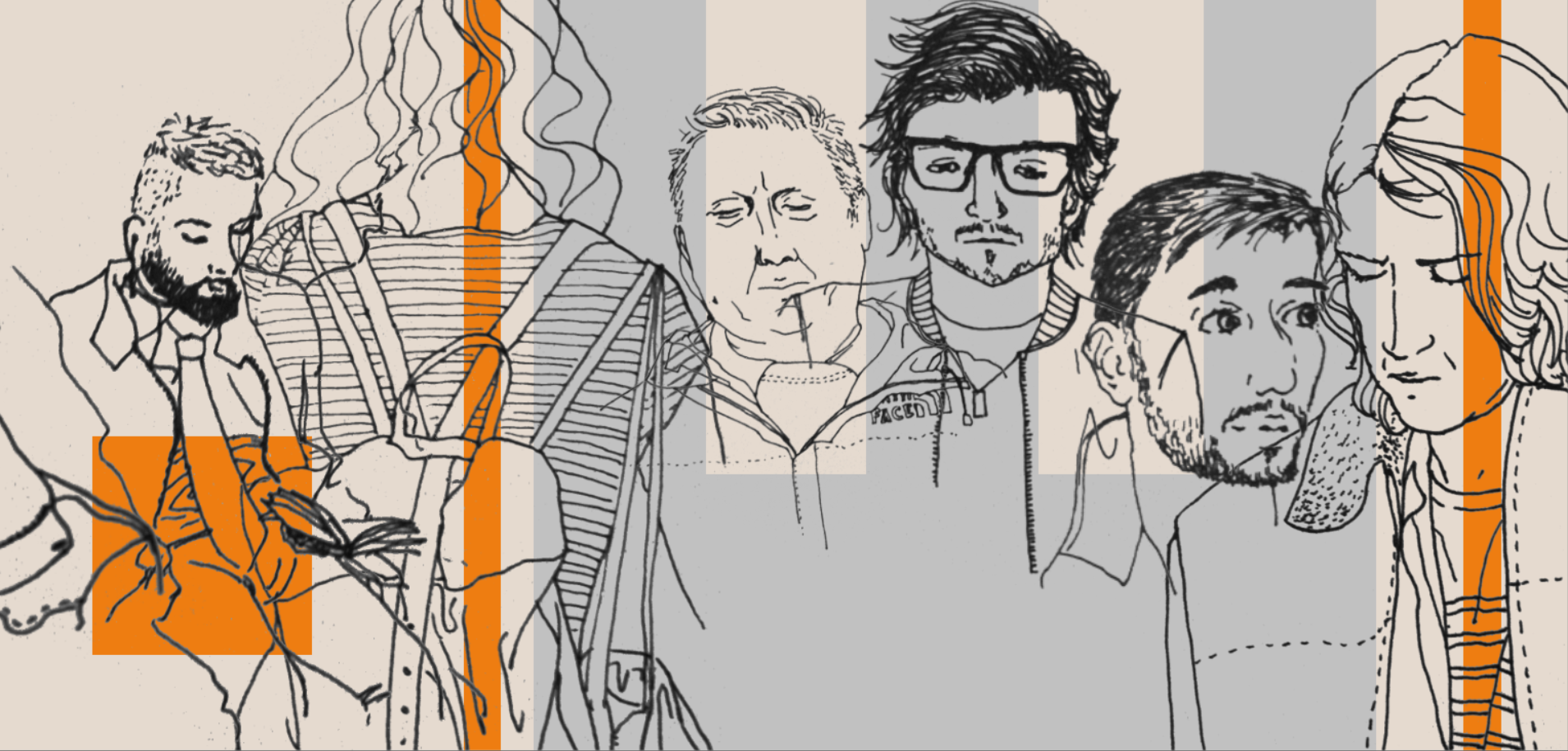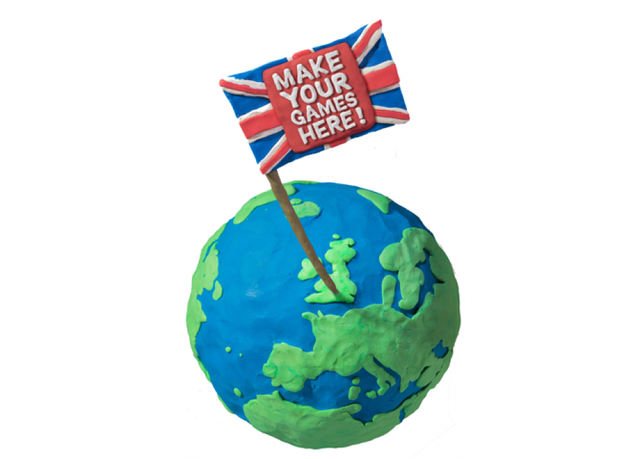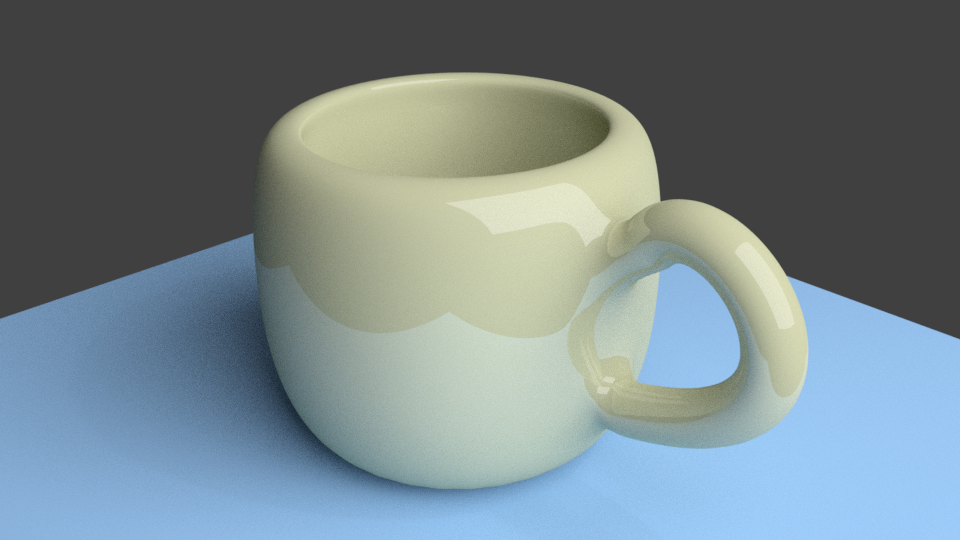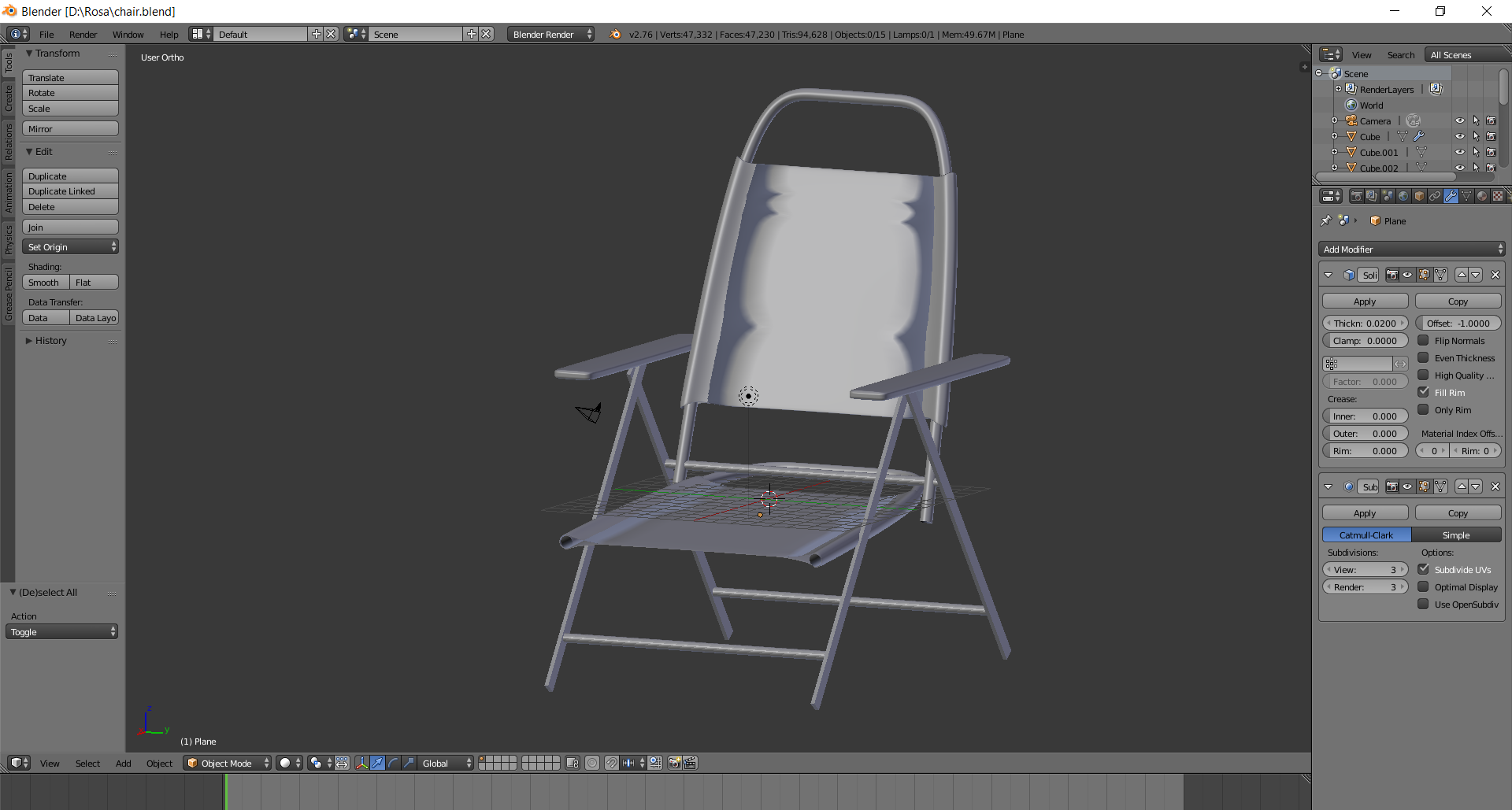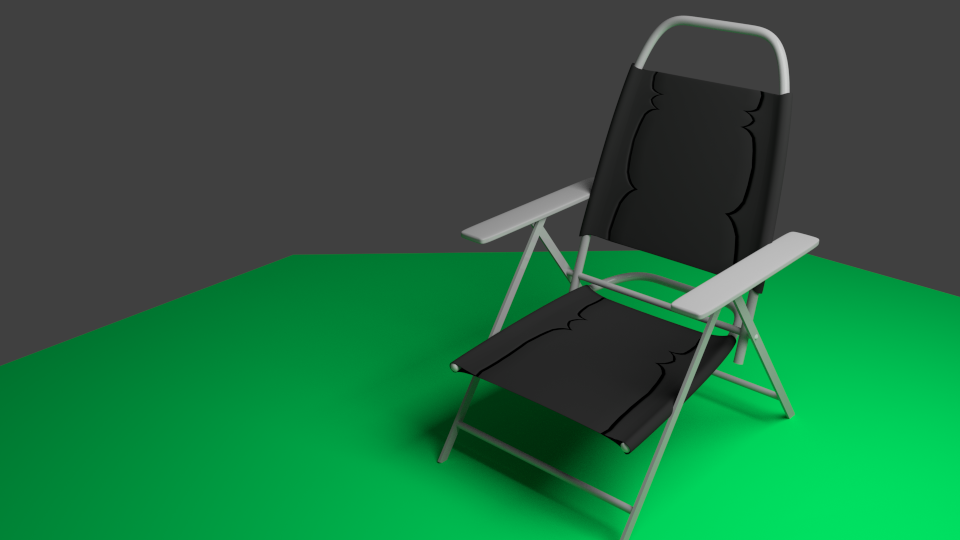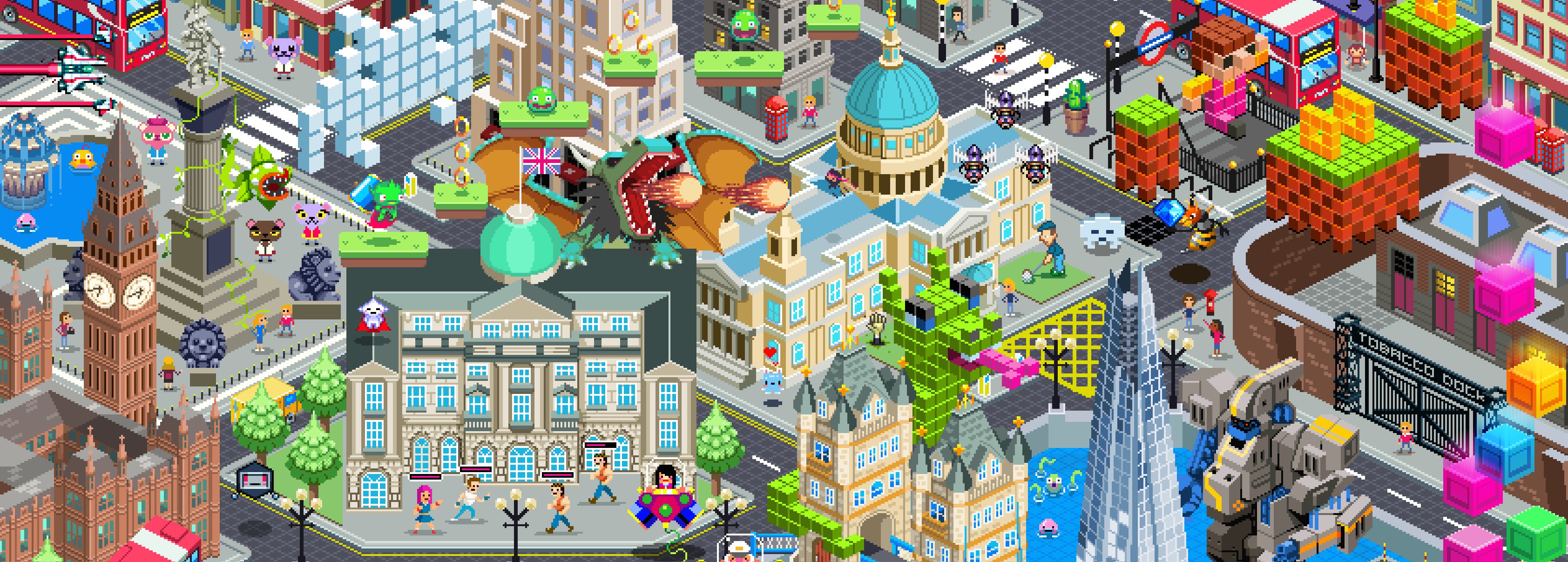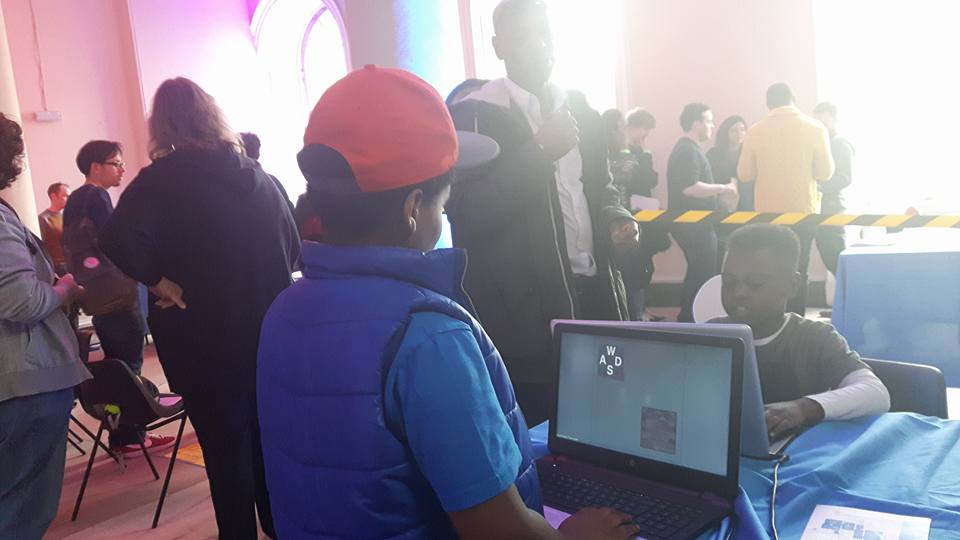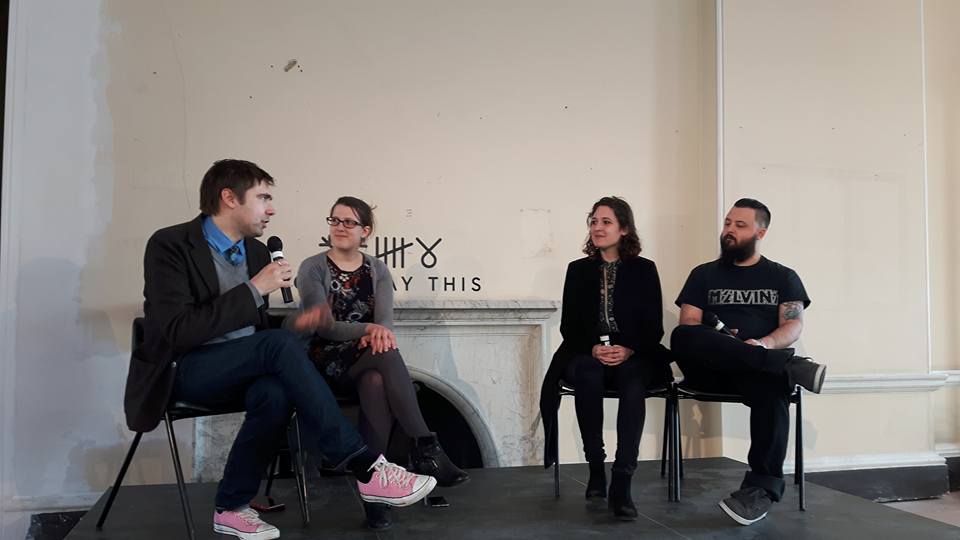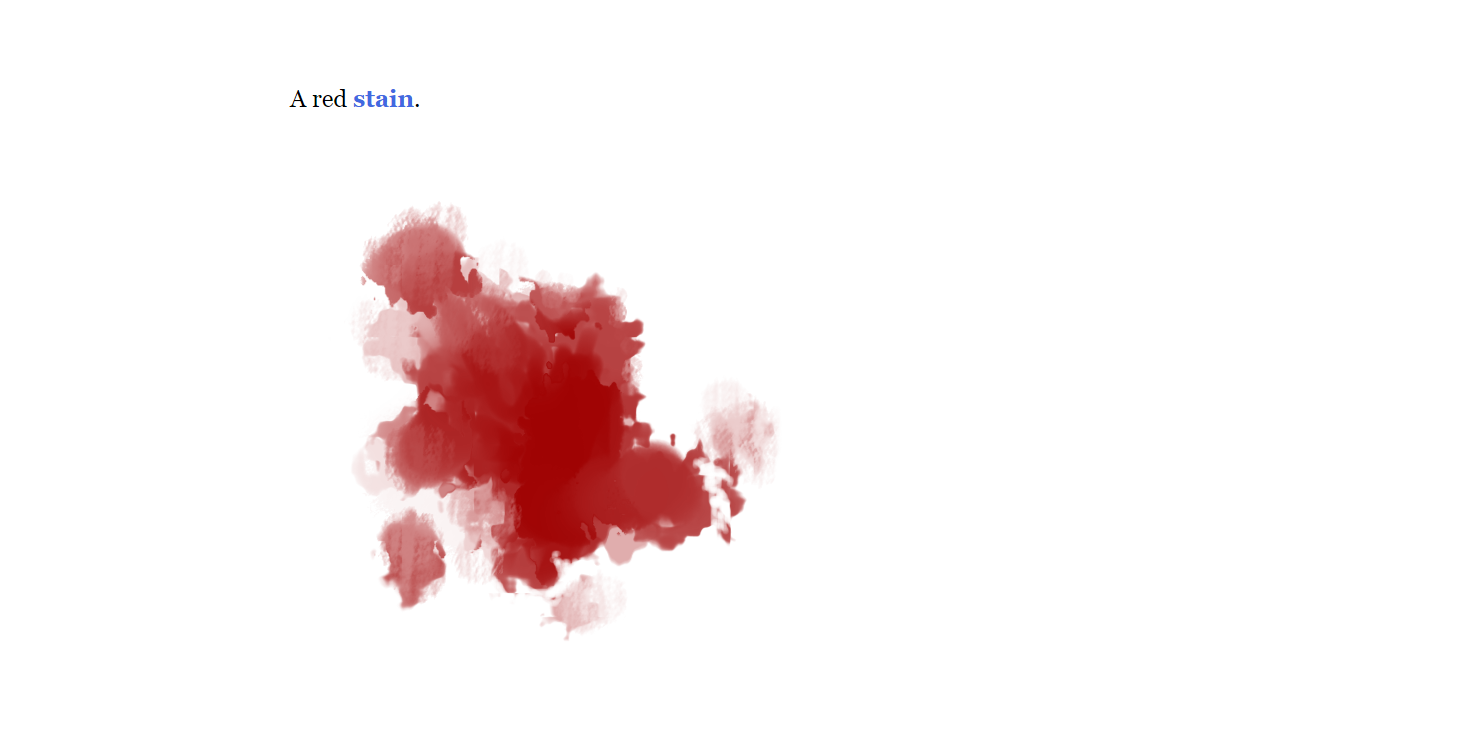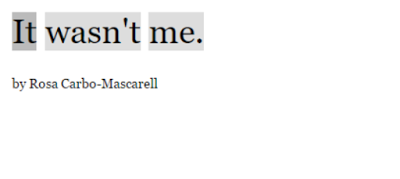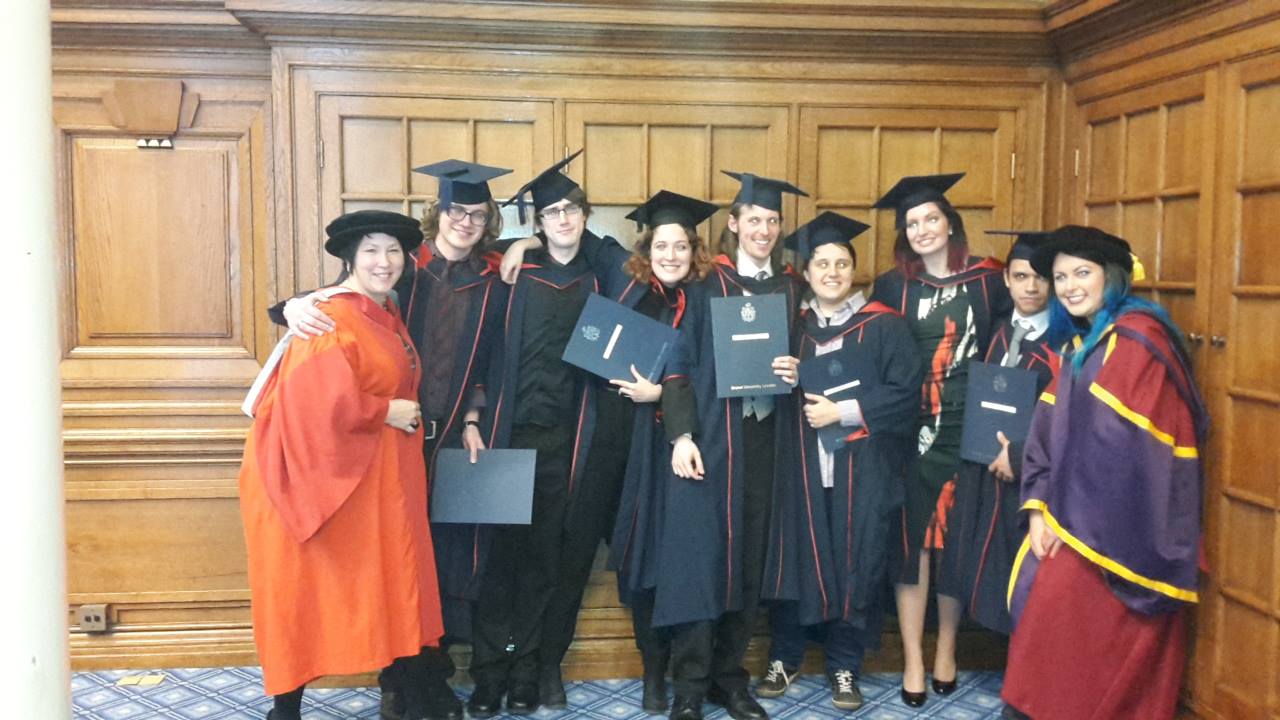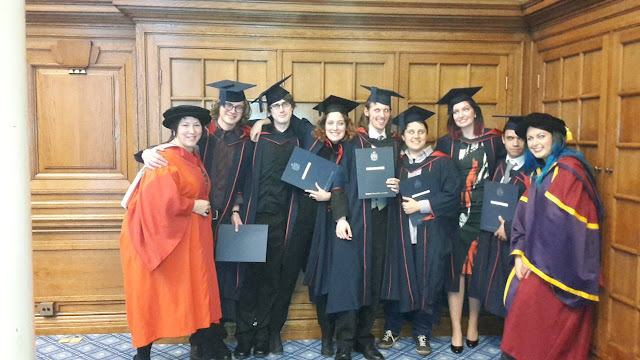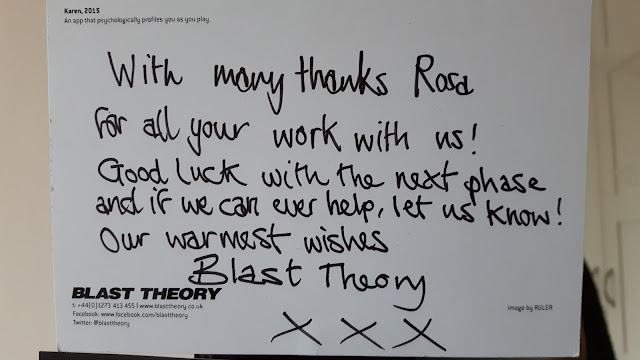Jam developers into a room with laptops, free pizza and 48 hours to make a game - what a wonderful invention! The Global Game Jam has been a favourite in my game development calendar since I first took part in 2015. Now with much more experience under my belt and a sleeping bag under my arm, I took the day off at work to head to the SAE Institute.
After a very uplifting video announced this year's theme, we buzzed around to form our teams. Luckily, I knew two people from before that I was going to be jamming with: Tim and Fede, both very talented designers. Even luckier, we found three more fantastic teammates: Anne-Sophie, gifted musician and sound designer, Sean, an incredible programmer, and Laura, the animating force that kept us all sane throughout.
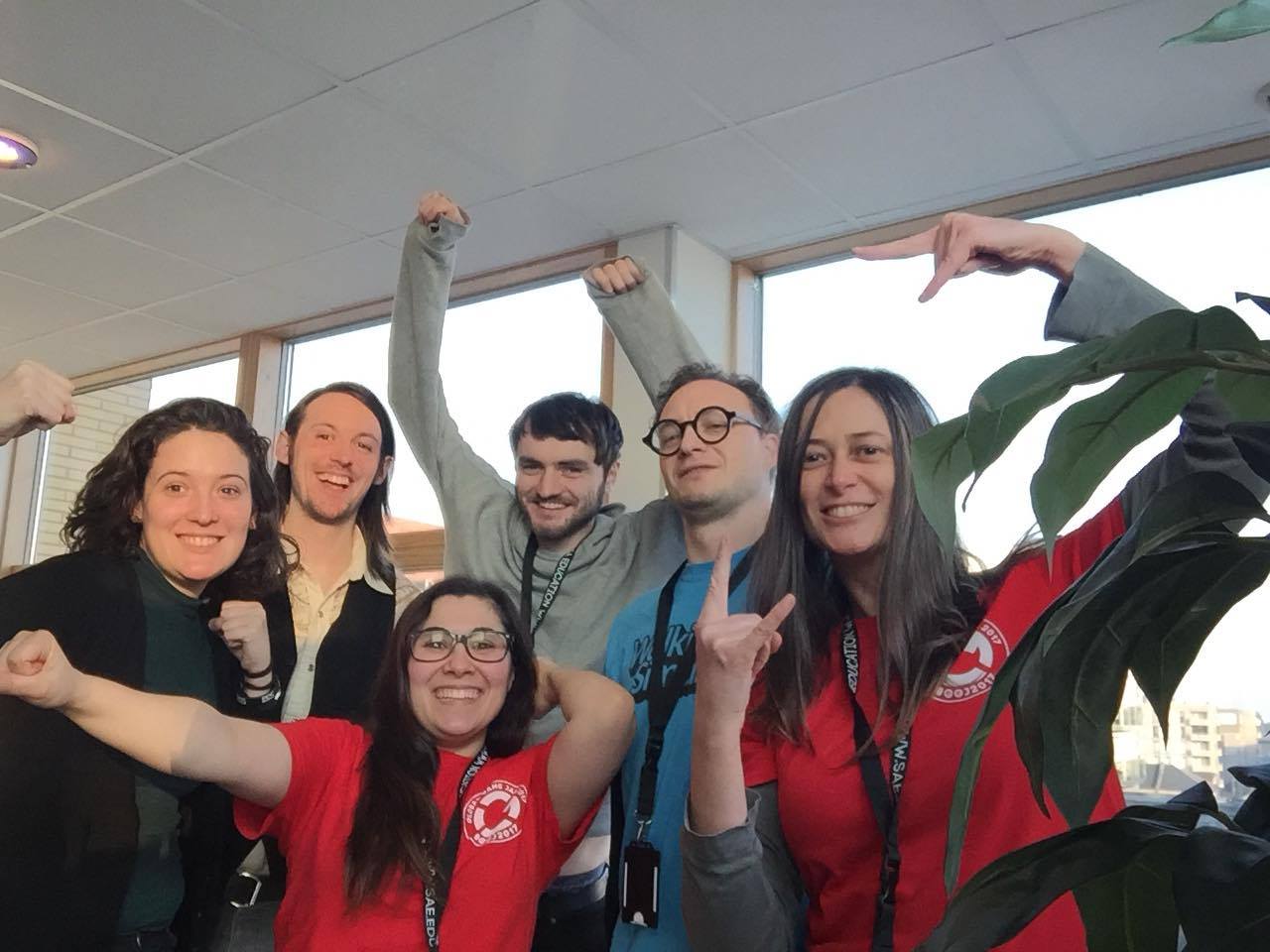
Look at that beautiful gender balance! Yeah! Left to right: Me, Tim, Laura, Sean, Federico, Anne-Sophie
Before you read on, I suggest you have a go at our game. It's called "Quiet Little Things" and you can download and play it on the Global Game Jam website. All you need is a musical instrument (or your voice) and a microphone to play.
We came to the idea quite quickly as we discussed different type of waves. Sound waves, light waves, emotional waves, psychic waves, oscillations, communication, vibrations... at one point we thought of making a game about having to serenade your lover on the balcony using a physical instrument, then about having to sync your vibrations with another player through voice. Soon we settled on the idea of making a series of small vignettes that you control with sound, either an instrument or your voice. You have to figure out how the scene reacts to different sounds you make in order to proceed to the next vignette.
We are making a vignette game for the #GGJ17 #GGJ2017! #screenshotsaturday #indiedev #gamedev pic.twitter.com/3SFd0Z3ATz
— Rosa Carbo-Mascarell (@moreelen) January 21, 2017
I started by setting up a pinterest board of the feel of the game and circulating that around the team. Then Tim and Fede came up with vignettes, Fede would sketch them on cards and give them to me. I drew the vignettes while Anne-Sophie would compose music for each and Sean worked his magic getting the sound to work. Then Fede and Tim would go about scripting and setting up the scenes while Laura went to all the teams, tirelessly bigging up our game. And that is how we spent most of the jam.
Well... almost all. The rest of the time we were having hilarious laughs, discussing game design theory and becoming great friends. Our team meshed together incredibly well, having a very synchronous idea of what we wanted our game to be and always looking out for each other. It was a joy!
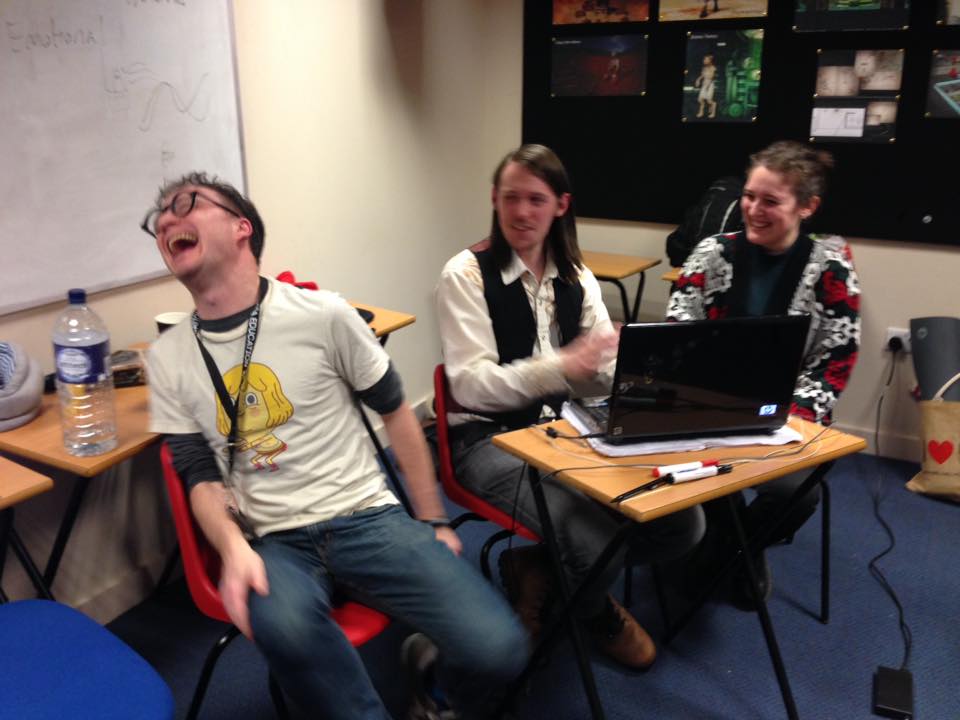
A blurry but very representative image of our time together. This was taken by Anne-Sophie late Saturday night. Left to right: Fede, Tim and me.
At some point everyone got distracted by Fede's synthesisers (except for Sean, that man had a force field against distractions).
My team got distracted and are now jamming with synthesisers. #GGJ2017! #GGJ17 pic.twitter.com/1YNROsg30j
— Rosa Carbo-Mascarell (@moreelen) January 21, 2017
We all slept Saturday night on yoga mats and blow up beds, under tables and inside sleeping bags. All a big part of the Global Game Jam experience. The next morning Sean, Fede and I had breakfast at a nearby cafe then dived straight in to finishing the game. I drew the assets for 8 vignettes though we only had time to implement 5. Determined to get one more in, I rolled up my sleeves and implemented the entire boat vignette all on my own using Unity and C#. That CS50 programming course payed off!
.
.
.
Finishing just on time, we all felt incredibly proud of what we achieved. And our audience seemed to love it too. One jammer even went out of his way to tell each one of us what a beautiful and touching game we had made. Thank you! Over free pizzas and beers, we waved our good-byes and sleepily went home to bed.
. .
Congratulations to everyone who took part in the Global Game Jam. You're all wonderfully talented people!
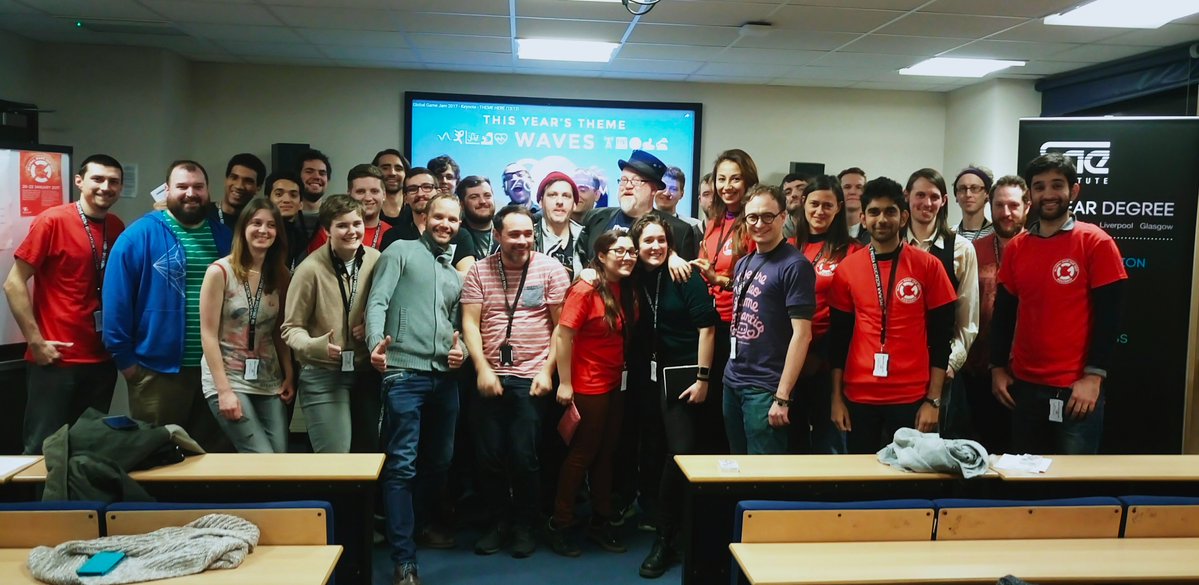
Congrats to all who took part in @globalgamejam at SAE London. Check out the games that were made in 48 hours https://t.co/RXEOvrZkwg #GGJ17 pic.twitter.com/npf3EuSe8v
— SAE Institute UK (@SAEinstituteUK) January 23, 2017
